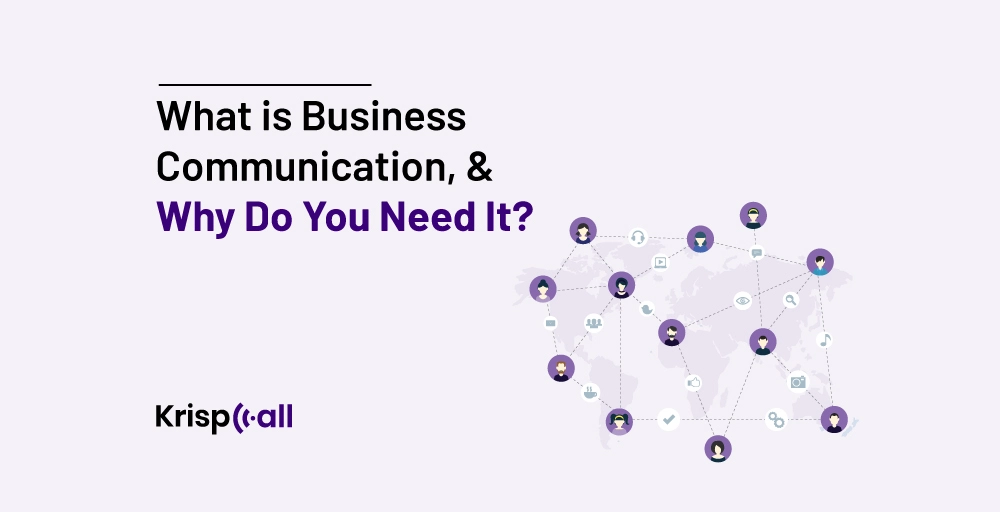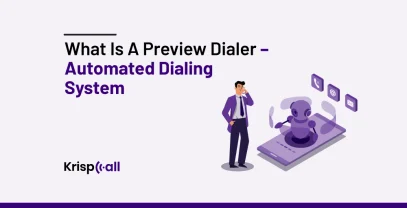The key to any organization’s success is effective business 🏢 communication. Effective business communication breaks down issues such as customer dissatisfaction, missing goals, unclear flow of information, and disagreement among organization employees.
Improper business communication may lead to just the opposite. If that is the case, providing satisfied customer support, resolving queries❓, issues, and negotiating can be challenging tasks.
This blog will cover how to communicate effectively in an organization, the benefits of business communication, various channels for efficient communication, and how efficient communication resolves issues like disagreement, ambiguity, and dissatisfaction among customers 🧑 and employees.
🔑 KEY HIGHLIGHTS
- Business communication is a process where individuals share information, ideas, and messages with people inside and outside the organization.
- Organizations depend on business communication to operate efficiently and build relationships.
- Upward, downward, lateral, and external are the four types of business communication.
- You must be clear, concise, complete, correct, concrete, considerate, and courteous when communicating in business.
- To conduct business communication, you can use emails, virtual meetings, phone calls, video conferencing, social media, and blogs.
- Using KrispCall’s VoIP service as your phone system will enhance your business communication as it has many sophisticated features.
What Is Business Communication?

Business communication is the process by which individuals can share information, ideas, and messages with people within and outside a company. It primarily promotes products and services, makes decisions, executes strategies, and ensures smooth operation.
Effective business communication may enhance partnerships and client relationships, increase productivity and employee satisfaction, and reduce errors. Moreover, it can be done via various communication platforms.
Here are some common examples of business communication:
- Written Communication: Written communication, often through emails, reports, proposals, and business letters, conveys messages or ideas through written texts. It is crucial for documentation processes, providing clear instructions, and keeping a log of conversations.
- Oral Communication: Oral communication is sharing information through speech by speaking with one another or in groups. Oral communication is crucial for efficient teamwork, decision-making, and relationship-building.
- Nonverbal Communication: In a business context, nonverbal communication is the exchange of signs or messages via non-textual means such as body language, facial expression, and eye contact. It is essential to increase trust and foster understanding between clients, partners, and coworkers.
- Electronic Communication: Electronic communication is the digital transmission of information using various technologies and techniques. This kind of communication allows for real-time interaction, which makes it faster and more effective. It can be done via social media platforms, instant messaging apps, SMS, or blogs.
Why Is Business Communication Important?
Business communication is the backbone of every successful organization because it promotes more engaged workers, stronger relationships, increased productivity, and better decision-making. This why effective communication is important as it helps an organization operate efficiently.
What Are The 4 Types Of Business Communication?
Business communication can be categorized into four types; each has a distinct function and involves diverse information flow routes both inside and outside an organization.
Here is an overview of each type.
1. Upward Communication
As the name suggests, this type of communication is directed from a company’s lower level to its upper level. It covers all correspondence sent by subordinates to higher management or their superiors.
Keeping management informed about the workforce’s accomplishments, difficulties, and feelings facilitates improved decision-making and policy formation.
🔥 Example: Surveys and Feedback from employees to leadership.
2. Downward Communication
This is the kind of communication that managers and other leaders have with their subordinates. It includes all managerial communications, instructions, and directives regarding choices, policies, and processes.
Its main objective is to guide employees, notifying them of new or modified policies.
🔥 Example: When a direct report receives an order from a manager via Email.
3. Lateral Communication
This type of communication might occur between coworkers or peers in different departments or at the same hierarchical level in an organization. Meetings, notes, group projects, and casual communication can all fall under this category.
Smoother operations are ensured by lateral communication, which makes it easier to coordinate tasks and exchange information.
🔥 Example: A meeting between coworkers and instant messaging.
4. External Communication
This is the exchange of information between the company and other parties, such as partners, suppliers, or clients. The main objectives of external communication are to manage a company’s brand and reputation in a larger market, develop partnerships, and promote goods and services.
🔥 Example: Sales, marketing materials, and communication with external parties.
Benefits Of Business Communication
Communication is any business’s underlying foundation, as it helps build strong relationships. Business communication is essential for building strong relationships with customers and employees. It has a lot of benefits for businesses.
Some of the benefits of Business Communication are:
- Improved Interpersonal Relations: Clear communication among employees helps to build trust and respect, leading to harmony in working relationships. When employees communicate well, they can understand each other’s perspective, which helps them work together smoothly and achieve goals.
- Improved Customer Service: The key to business success is understanding customer needs and resolving their issues. Effective communication with the customer ensures that their needs and problems are adequately addressed.
- Enhanced Productivity: Good communication with employees saves time and increases efficiency by providing clear, concise instruction. Clear instructions guide employees in the right direction, reducing mistakes and wasted time, which helps to boost productivity.
- Better Decision: Business communication training helps employees communicate with each other effectively, ask questions, listen to each other truly, and share ideas that lead to better business decisions.
- Conflict Resolution: Conflict may arise in any working environment. It may occur from misunderstanding, disagreement, or inaccurate or unclear information. Good communication skills help to manage, minimize disruption, and resolve conflicts by identifying and addressing them.
Role Of Business Communication
Effective communication is the key to business success. Communication between colleagues, team members, and bosses is crucial for business growth, as each has a valuable role.
The following points describe how communication among various roles helps to grow a business.
1. Top-to-bottom Approach (Bosses to Workers)
In the Top-to-bottom approach, communication flows from senior-level management to lower-level employment.
This approach flows information such as crucial decisions, company updates, notices, and strategic plans for improving the company. Effective top-bottom communication helps boost morale, keep everyone aligned, and provide every update to every level of employee.
2. Peer-to-peer approach (Workers talking to each other)
In the Peer-to-Peer approach, information is shared among colleagues. The communication flows from the same peer-to-peer.
Communication with colleagues surely improves your productivity. Assisting, sharing information, answering questions, and providing feedback among the same peers helps to resolve any issues or doubts efficiently and increases workplace fun and vitality.
3. Bottom-to-top (Workers Talking to Bosses)
The bottom-to-top approach is opposite to the Top-to-bottom approach. Here, information flows from lower-level employment to senior-level-management.
This approach allows businesses to pass concerns, valuable insights, and feedback from corporate-level employees to senior-level management. It helps the boss make better decisions, as everyone’s perspective is heard.
Etiquette Of Business Communication
In the context of business communication, Etiquette is the collection of norms and regulations that people follow to project professionalism and respect when interacting with others. Following these brings perfect harmony in business communications matters.
Here are the key points related to etiquette in business communication:
- Communicate Concisely: The language should be simple and easy to understand for customers. Some clients might annoy you if you don’t know about the products or if the language is complicated and unfamiliar.
- Tailoring The Formality: Tailoring the formality level to the audience and the situation is crucial. Texts written in emails or letters should provide a formal tone and proper greetings. Having an appropriate voice that suits the customers is essential when speaking with someone.
- Secrecy Protection: Protect the sensitivity and secrecy of the company’s information. Share confidential information only with those who are legitimate and need to know. When providing sensitive information, communicate using a secure channel.
- Avoid Grammatical Errors: Always observe grammar and spelling before sending and responding to customers’ messages. If you make any mistakes in your communication, you may lose a customer.
7Cs for Effective Business Communication
The 7Cs are a powerful and effective framework for achieving more efficiency in business communication. The list of 7Cs for effective business communication are:
- Clarity: Ensure that your message is clear, accurate, and easy to understand by avoiding complex sentences, jargon, and ambiguity.
- Concise: Keep your message short and concise, and avoid unnecessary details.
- Completeness: Provide all the information required for the audience to comprehend the message clearly and eliminate all ambiguity by responding to potential questions or concerns.
- Correctness: Make sure your message is appropriately grammatically, punctually, and spelled correctly.
- Concreteness: Organize your messages logically by providing specific examples, facts, and data that support your message.
- Consideration: Address your customer’s needs, requirements, and preferences, considering background knowledge and potential interpretation.
- Courtesy: Always communicate politely and respectfully with everyone and consider their perspectives and feelings to nurture positive relationships.
Business Communication Channels
Business communication can be done through various methods and communication channels to exchange information within and outside an organization.
Some of the common business communication channels are listed below:
- Email: Email is a widely used formal communication channel for sending messages, sharing documents, scheduling meetings, and sending updates.
- Meetings: A meeting is a formal gathering for real-time discussion, decision-making, and brainstorming ideas. It can be in-person or virtual.
- Phone Calls: This means of communication can be used for immediate communication and clarification. Customer support, inquiries, and negotiations can be done through phone calls.
- Video Conferencing: This is similar to phone calls but enables face-to-face communication regardless of geographic location. Tools like Zoom, Skype, Slack, and Microsoft Teams can be used to conduct meetings, presentations, and training sessions.
- Social Media: Social media is a primary source of traffic and engagement for our services. Tools like Facebook, LinkedIn, and Twitter(X) can be used for brand promotion, announcements, and sharing company updates.
- Newsletter: Internal newsletter or periodic publication that offers updates and information to clients, employees, and stakeholders.
- Blogs: Blogs and websites are powerful platforms for sharing industry insights, product updates, and company news with a broader audience.
How Do You Set Up A Business Communication Process?
A successful business relies on effective communication. Communication breakdowns lead to issues like customer dissatisfaction and missing goals, so setting up an effective communication process is crucial.
Here are the five steps required for business communication setup:
1. Assess Your Current Situation And Set Goals
Identifying the areas for improvement is needed to set any goals related to communication. Inspecting the problems that need to be improved, such as employees’ sentiments, productivity, and flow of information to different piers.
Based on that issue, you can set a communication process with goals set for employees’ satisfaction and work efficiency, and the communication flow to various piers should be monitored.
2. Map Out Your Communication Network
Analyze the structure of your business and the groups involved that need to interact. Inspect every group of organizations that requires information to function. The group includes teams, departments, managers, and external contacts such as customers.
Track their ongoing tasks and identify their requirements, potential, and communication needs. What type of requirements do they require? Do they need frequent updates or occasional updates, or do they just want multiple communication channels?
3. Choose The Right Communication Method
Identify the best methods for communicating with people, interacting with groups, and helping them achieve their goals. This could be video calls, emails, presentations, reports, or a social media platform to connect with outsiders.
Be more realistic about needs. Engaging with people through an appropriate means is necessary as it can make a difference. For a large company, you might have to rely on video conferencing or some document-sharing & collaboration platforms.
4. Select The Right Tools
Choose the right platforms that fit your company’s preferences and culture, as there is no perfect one-size-fits-all solution for communication tools.
Focus on cloud storage for documents, email platforms, online chat apps, and cloud phone systems for remote teams. Those tools help to develop your brand and editorial guidelines for consistent communication.
5. Document The Process
You should create documents for your communication plan that anyone can access. This helps to build interpersonal growth as it provides a guide on what to do or what to use in different situations. Review your documents regularly to make sure the process you’ve always used served its purpose.
Enhance Business Communication With KrispCall
Enhancing your business requires various communications for different purposes. One of the powerful channels for business communication is phone calls.
KrispCall is a cloud telephony service provider that offers reliable telephony services for modern businesses. Its cloud telephony system comes with advanced conversation management features.
Some of these include internal chats with members, call monitoring capabilities to dig into live calls, MMS for more fluid messaging, and the Unified Callbox that brings all of the telephony aspects into a single dashboard, making the entire process of managing conversations much simpler.
Using KrispCall as your phone system will enhance your business telephony processes, as it provides sophisticated features for business calls.
Conclusion
Effective communication is crucial for any business’s growth. It eliminates conflicts and ambiguity, as well as unclear and inaccurate information. It also helps to improve interpersonal relations and enhance productivity, decision-making, customer service, and conflict resolution.
There are various business communication channels to exchange information within and outside an organization. Each channel has its own benefits. Among them, phone calls can be the best option as they are the most convenient method and can be done using VoIP services.
When it comes to VoIP services, the best option is KrispCall. With it, you get all the features and functionalities of a near-complete cloud phone system, which can prove to be the best solution if you are looking to improve your business’s telephony capabilities.
FAQs
What is the importance of non-verbal communication?
Nonverbal communication makes us feel more comfortable and trustworthy. It also makes us feel at ease with our colleagues, leading to positive relationships.
How do we improve business communication skills?
Improving business communication skills requires many elements, such as listening actively, collaboration, seeking feedback, non-verbal communication, being clear and concise, and many more.
What are the problems that effective business communication can solve?
The problems that effective business communication can solve include communication barriers, transparency and trust, cultural differences, and conflicts in workspaces.
What are the 5 methods of business communications?
Verbal, non-verbal, visual, listening, and written communication are five (5) business communication methods.
What may happen if there is no proper communication in the business?
If there is no proper communication in businesses, employee productivity may be affected negatively.
What are the communication barriers in business?
The common communication barriers in business are geographical, physical, cultural, hierarchical, emotional, generational, and linguistic barriers.





